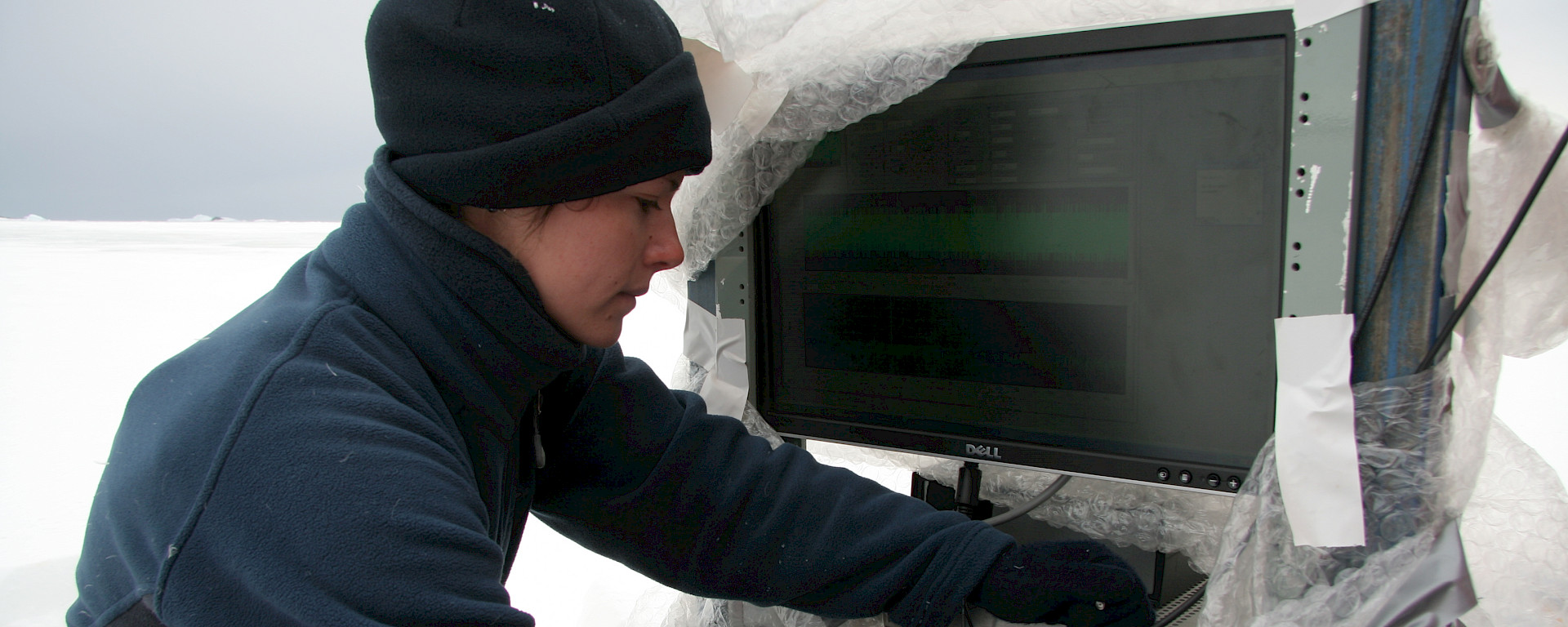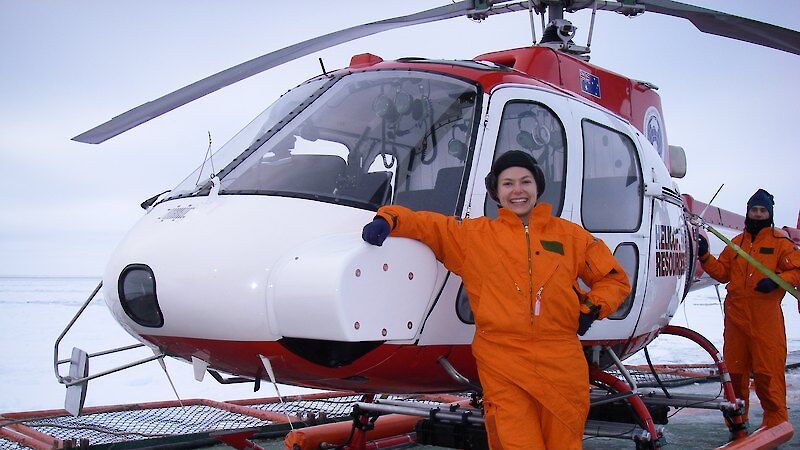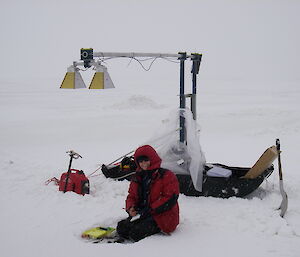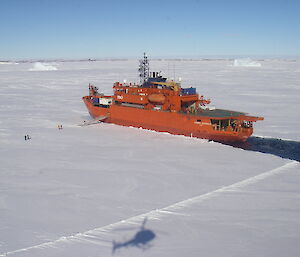Young sea ice scientist, Natalia Galin, is one of 16 winners of this year’s Fresh Science talent search – a national competition that identifies new and interesting research undertaken by early-career researchers.
Ms Galin (27), who has just submitted her PhD thesis through the University of Tasmania, has been working under the supervision of Australian Antarctic Division sea ice scientist, Dr Tony Worby, to develop helicopter-borne radar technology for measuring the thickness of snow on sea ice.
To do this she has taken a radar traditionally used on a sled or as a hand-held device, and modified it for helicopter use. The 2–8 GHz ‘Frequency Modulated Continuous Wave Radar', was provided by Ms Galin’s collaborative institution, the University of Kansas Centre for Remote Sensing of Ice Sheets.
'The radar is similar to a police radar that’s constantly transmitting and receiving [electromagnetic radiation such as radio waves]. When you drive past the radar there’s a change in the wave frequency — a Doppler shift — which is proportional to your speed. The change in frequency allows the police to work out how fast you're going,' Ms Galin explains.
'With the helicopter-borne radar, instead of transmitting a single frequency and looking for a change in frequency (i.e. speed), we are continuously transmitting a sweep across the frequencies 2 — 8 GHz. This sweep allows us to detect the range of the object — in this case snow.'
The resulting data allows her to determine snow thickness, which is critical for accurately measuring the thickness of the sea ice underneath it. As up to 90% of sea ice can be submerged, scientists must measure the ice 'freeboard' – the vertical portion of sea ice that sticks out of the water – and then infer how much sea ice lies below. But the amount of snow on its surface, which is three times lighter than sea ice, must be accounted for first.
'If we don’t account for the snow, we could over-estimate the thickness of the sea ice,' Ms Galin says.
Understanding the seasonal and annual variations in sea ice thickness is important for climate change-related research as the ice acts as insulation, preventing the ocean from losing heat. Changes in sea water temperature as a result of changes in sea ice, will alter global currents and climate systems.
While it’s already possible to measure the snow layer using sled-based or hand-held radars, helicopter-borne instruments allow scientists to work on a bigger and more efficient scale.
Ms Galin made two trips to Antarctica to develop her radar. During her first trip in 2007 – as part of the Sea Ice Physics and Ecosystem eXperiment – she spent about 20 hours in the air monitoring the radar from her laptop.
'We had a lot of problems recording the data because of the helicopter vibrations,' she says.
'I’d spend hours in the field and then come back to the lab and work with another engineer to tweak and fix the radar for the next day’s flying. The accuracy of the radar also decreased with altitude, so we had to find a way to measure that inaccuracy and correct for it.'
She says the readings were accurate to about five centimetres, but as the snow thickness was sometimes 10cm or less, the accuracy could be improved.
'There’s more work to be done, but I have shown that a helicopter-borne radar can measure snow thickness, and we've quantified the results,' she says.
'I’m now writing a technical specification for a radar — built from scratch, rather than adapting an instrument — that can overcome the issues I experienced during my PhD research.'
Ms Galin is also looking forward to a post-doctoral position at University College in London, where she will analyse data from the recently launched CryoSat-2 satellite. But first she must get through a bigger challenge – engaging year 9 and 10 students in her research, as part of her Fresh Science responsibilities.
'We have to present our research in three minutes, to school students, who I’m told are the most difficult audience,' she says.
But the ‘boot camp’ science communication workshop offered through the Fresh Science program should give her a good head start, and lay the communication foundations for a future career that promises to attract a lot more public interest.





